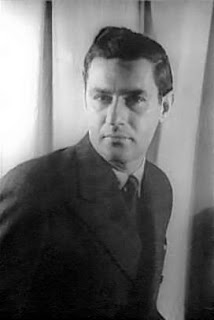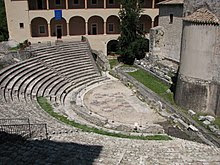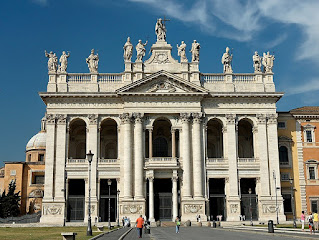NEW - Gian Carlo Menotti - composer and librettist
Founded Spoleto festival after finding fame in the United States
Gian Carlo Menotti, who wrote more than two dozen operas and founded the annual Festival dei Due Mondi in Spoleto, was born on this day in 1911 in the village of Cadegliano-Viconago, on the Swiss-Italian border. A prodigiously talented child who began to write music at the age of seven, Menotti was sent to study at the Curtis Institute of Music in Philadelphia as a teenager and settled in the United States. For many years he was the partner - professionally and in life - of the brilliant American composer, Samuel Barber. Menotti wrote the libretto for Barber’s 1957 work Vanessa, which is regarded as one of the 20th century’s finest operas. Two of Menotti’s own operas, The Consul (1950) and The Saint of Bleecker Street (1955), won Pulitzer Prizes. He created the Festival dei Due Mondi in 1957 out of a desire to make his mark in the country of his birth but also because he was intrigued by the idea of creating an event in which he and his friends could showcase their own work and to which he could also invite some of the great names of music and the arts to perform before a less traditional audience. Read more…
___________________________________________________________
Vittorio De Sica - film director
Oscar-winning maestro behind 1948 classic Bicycle Thieves
Vittorio De Sica, the director whose 1948 film Bicycle Thieves is regarded still as one of the greatest movies of all time, was born on this day in 1901 in Sora in Lazio. Bicycle Thieves, a story set in the poverty of post-War Rome, was a masterpiece of Italian neorealism, the genre of which the major figures, in addition to De Sica, were Luchino Visconti, Roberto Rossellini and Giuseppe de Santis and, to a smaller degree, Federico Fellini. The movie was one of four that landed Academy Awards for De Sica. Another of his great neorealist movies, Shoeshine (1948), won an honorary Oscar, while Bicycle Thieves won a special award as an outstanding foreign language film in the days before the Best Foreign Language Film category was introduced. De Sica would later win Oscars in that section for Yesterday, Today and Tomorrow (1963) – a comedy starring Sophia Loren and Marcello Mastroianni – and The Garden of the Finzi-Continis (1970). His Marriage Italian Style (1964), also starring Loren and Mastroianni, also earned a nomination as Best Foreign Language Film and for Loren as Best Actress. Loren did win Best Actress for her role in his 1961 movie La Ciociara, which was released outside Italy as Two Women. Read more…
___________________________________________________________
1990 World Cup - Italy’s consolation prize
Azzurri beat England for third place
Italy beat England 2-1 in Bari to claim third place in the World Cup finals, of which they were the host nation, on this day in 1990. It was a small consolation for the team, managed by Azeglio Vicini, who had played some of the best football of all the competing nations to reach the semi-finals, only to be held to a 1-1 draw by Argentina in Naples and then lose the match on a penalty shoot-out. Their heartbreak mirrored that suffered by England, who had also suffered a defeat on penalties in their semi-final against West Germany in Turin. Many neutrals believed that Italy and England would have been more worthy finalists, particularly in retrospect after West Germany had beaten Argentina by a penalty five minutes from the end of 90 minutes in a match of cynical fouls and attritional football that is seen as the poorest World Cup final in the competition’s history. The play-off for third place lacked the intensity of a final, reflecting the heavy weight of disappointment each set of players was carrying. Yet it was important to the Azzurri to finish on a high note and a crowd of 51,426 inside the Stadio San Nicola - a new stadium built specially for Italia ‘90 - saw the game decided with three goals in the final quarter. Read more…
__________________________________________________________
Giacomo Barozzi da Vignola - architect
Legacy of beautiful Renaissance buildings throughout Italy
One of the great architects of the 16th century, Giacomo Barozzi da Vignola, died on this day in 1573 in Rome. Often referred to simply as Vignola, the architect left the world with a wealth of beautiful buildings and two acknowledged masterpieces, the Villa Farnese at Caprarola and the Church of the Gesù in Rome. Along with Andrea Palladio and Sebastiano Serlio, Vignola was responsible for spreading the style of the Italian Renaissance throughout Europe. He was born at Vignola near Modena in Emilia-Romagna in 1507. He began his career as an architect in Bologna and then went to Rome to make drawings of Roman temples. He was invited to Fontainebleau to work for King Francois I, where it is believed he first met the Bolognese architect, Serlio. Back in Italy he designed the Palazzo Bocchi in Bologna and then moved to Rome to work for Pope Julius III. He later worked alongside the artist Michelangelo, who greatly influenced his architectural style. From 1564 onwards, Vignola worked on the new St Peter’s Basilica, following the plans Michelangelo had drawn up for the domes. Read more…



























